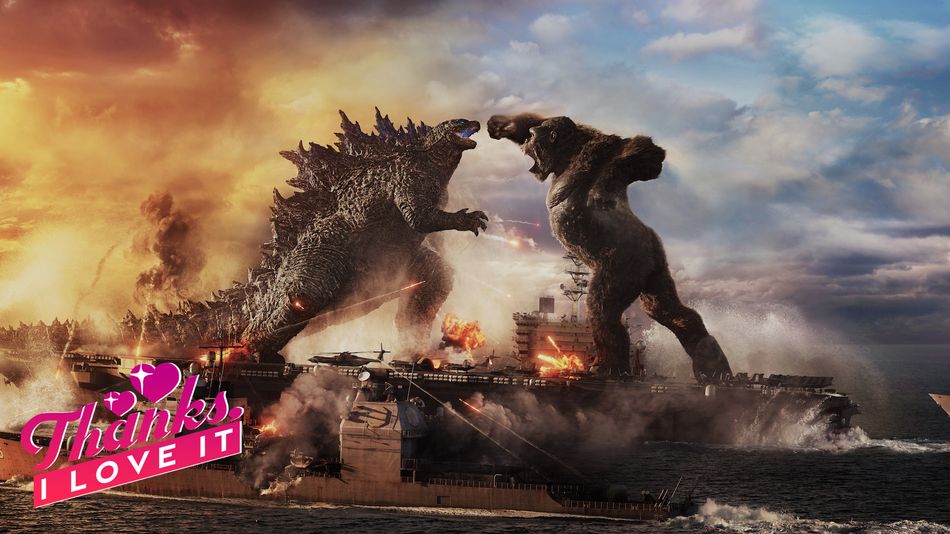
Image: Courtesy of Warner Bros. Pictures
Kaiju films are not, by definition, minimalist endeavors. At their absolute smallest they still feature enormous monsters destroying the sum of man’s ambition, and at their biggest they’re about as large scale as films can get. Godzilla vs. Kong is a maximalist movie, a surprisingly well paced clash of titans that takes place all across (and inside) the globe and is about an ape the size of the Plaza Hotel throwing down with a nuclear lizard. Anyone with reasonable expectations would assume that Godzilla vs. Kong pushes that premise to its CGI limits, and they would be right.
The first two acts of Godzilla vs. Kong deliver on many levels — Kong appears and only moments later spears a hole in the sky with a tree trunk, Godzilla demonstrates an understandable disdain for Florida, there’s a small and habitable earth in the center of our earth and everyone is just kind of fine with it, and the big boys get up to their big boy fightin’ business. However, just when you think those ideas can’t add up to any more baseline kaiju delight, Godzilla vs. Kong unleashes its secret weapon. Something bigger, something unexpected, something more.
Enter Mechagodzilla.
Die hard fans of the Monsterverse may have suspected that Godzilla’s larger, more deadly, and more importantly robotic twinsie would show up in Godzilla vs. Kong but I did not. Mechagodzilla makes his terrifying debut two thirds of the way into a side plot starring Bryan Tyree Henry, Millie Bobby Brown, and Julian Dennison that, to be honest, I assumed was going nowhere. The existence of Mechagodzilla is actually crucial to however much sense this movie is trying to make, considering that the threat of Mechagodzilla is what turned Godzilla against Florida and necessitated the airlifting of King Kong to Antarctica in the first place (this movie is incredible), but the facts of why he needs to be in the movie aren’t as important as the fact that he’s there at all.
The mind-blowing joy in realizing “Godzilla vs. Kong” is a bait-and-switch for “Mechagodzilla Wants That Smoke” feels unbelievably satisfying.
It’s hard to be pleasantly surprised by much these days. Almost every time something happens that’s out of the ordinary, it’s because that thing is terrible and even the low expectations of a traumatized American millennial didn’t think it was going to get that bad. For the millions of people who have spent most of the past year inside their homes, the upper limit of finding new things to feel good about without leaving the house whooshed by months ago, which is why the joy in realizing Godzilla vs. Kong is a bait-and-switch for Mechagodzilla Wants That Smoke feels unbelievably satisfying.
As Kong and Godzilla put aside their differences to deliver the beatdown to their mechanical cousin, it dawned on me that Godzilla vs. Kong was the first time in a long while that I allowed myself to have high expectations and get more than I anticipated. The mental subsistence goal of “fine under the circumstances” has been my default for months and the possibility of having my giggly, kind of wine drunk Kaiju movie–watching brain get a surprise double hit of serotonin didn’t seem possible until that perfect Mechagodzilla reveal.
Am I putting a lot on the shiny shoulders of a giant robot lizard? Yes, and I’m also probably projecting. Like all Kaiju, Mechagodzilla is a symbol for a greater societal ill whose defeat at the hands of nature (Kong) and a failsafe against the evils of imperialism (Godzilla) gives Godzilla vs. Kong its poignant if straightforward thematic endgame. I just liked when the robot laser went brrrr. Mechagodzilla was too much and just enough at the same time — the best possible addition to a movie that needed to go big or go home.
